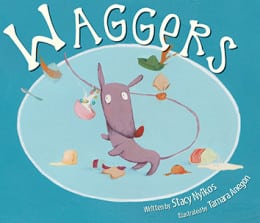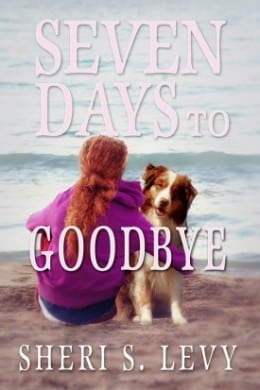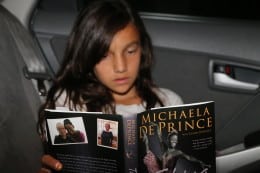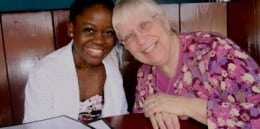It is rare that I write a book review on my blog, World Reads. To make the cut, I have to either really LOVE a book and want to spread the word about the book or the author must no longer be with us to give me an author interview. In the case of Playing a Part, I was first introduced to it in its Russian version (шутовской колпак ) by Arthur A. Levine who asked me to read and report on it as he was considering its acquisition, translation, and publication in the United States.
And this is how my report to him started: WOW and double WOW!
I very much enjoyed reading Playing a Part not just because of its timeliness given the homophobic-oriented laws Putin is enacting in Russia and the jail-term risk the author, Daria Wilke, might experience on her next visit home, but because Playing a Part is well written and well told. So while the “hype” and “market press” might draw attention to the book and increase sales, it’s the writing and the story that will stay with readers long after they’ve read Grisha’s story. And my guess is that it might just change how some people think along the way or at least make a dent in those sitting on the fence who view gays as “different” or not “normal”.
I could tell from the very first page that Playing a Part would be a winner and it did not disappoint on many levels. For one, there’s a complete story arc both in terms of plot and internal character growth that would be satisfying to an American audience. Second, the writing is literary and gorgeous from beginning to end. Third, the author, Daria Wilke inserts Russian humor that will easily cross our borders and make American readers laugh out loud. Fourth, the setting is magical and like no other I’ve seen in children’s literature in that the Moscow puppet theater is described in such intricate detail, it makes you feel like you’re part of the setting. Fifth, Grisha, our main character is not only likeable, he feels as real as any boy dealing with issues of friendship, loss, and the struggles of self-realization. And sixth, unlike many other Russian children’s books I’ve read, Playing a Part is a story that will not feel foreign or Russian to American readers. It offers sensibilities that anyone with a human heart will relate to, understand, and feel.
This is exactly the kind of book I would have wanted to read as a kid. It’s written from someone who knows Russia and can reveal her intimate knowledge and view of Russia through the details, yet write it in such a way that it shares our sensibilities too and does not make us feel lost in the details or overwhelmed by them. In other words, you don’t have to be Russian or know Russia to appreciate the story. Nor do you have to be gay. Wilke grounds us in the character and place so well, you could almost come from Mars and still follow along. All one needs to bring into the reading is an open or curious heart to become fully engaged by Grisha’s journey of self-realization.
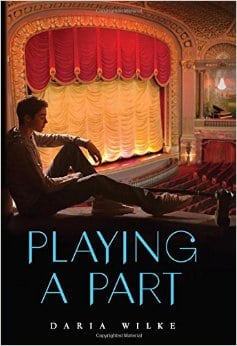 So many books written by Americans that are set in far-away lands—whether historical or not—lack the kind of authentic details that make a story come alive such that the characters feel so real they could walk off the page and where the details are so perfectly accurate you might think the writer had written it in “real” time, standing in the very spot she’s just described or scene she’s just created. So many times, I’ve experienced books set in places where I’ve actually lived and was greatly disappointed by the kind of details I’m talking about that were were not only absent or spare, but sometimes completely wrong. And it’s no wonder, with a little digging, you can quickly unveil that the author has never been to the place she’s describing or writing about and simply did her research on the internet. Don’t get me wrong, a good writer can still tell a good story set abroad, but it’s the writer who’s lived, breathed, and absorbed the culture of that place into their veins that produces the kind of details that separate a good story from a great one. And Playing a Part is a great story from that aspect.
So many books written by Americans that are set in far-away lands—whether historical or not—lack the kind of authentic details that make a story come alive such that the characters feel so real they could walk off the page and where the details are so perfectly accurate you might think the writer had written it in “real” time, standing in the very spot she’s just described or scene she’s just created. So many times, I’ve experienced books set in places where I’ve actually lived and was greatly disappointed by the kind of details I’m talking about that were were not only absent or spare, but sometimes completely wrong. And it’s no wonder, with a little digging, you can quickly unveil that the author has never been to the place she’s describing or writing about and simply did her research on the internet. Don’t get me wrong, a good writer can still tell a good story set abroad, but it’s the writer who’s lived, breathed, and absorbed the culture of that place into their veins that produces the kind of details that separate a good story from a great one. And Playing a Part is a great story from that aspect.
I appreciate accurate details and know how hard they are to incorporate from my own experience writing Lara’s Gift, set in Imperial Russia. I also understand that not every book written and published outside of the United States is suitable for our market due to different cultural sensibilities. That is not the case with Playing a Part. Wilke goes into such lovely details about the puppet theater, puppet making, Russian weather, and Moscow life in general, readers will not only learn how to make a puppet, but will walk away with vivid images of the setting and a compelling character’s struggle to be himself. Because of these wonderful details Wilke draws from her own Russian culture, she creates similes that will be fresh to an American reader.
I thank Arthur Levine and Emily Clement for presenting Playing a Part to an American audience. Bringing foreign books across borders is just as important as publishing diverse books.
Playing a Part will be released on March 31, 2015 and can be purchased anywhere you can buy books. If you can read Russian, I would also encourage you to read the Russian version for its beautiful language.
Daria Wilke, a graduate of the Faculty of Psychology and Pedagogy of Moscow State Pedagogical University, is a referent at the Institute of Slavic studies at the University of Vienna and a teacher of the Russian language. She started writing prose at thirty-one and her first essay Die Seiltänzergeneration was published in the German anthology Mächte. For her prose, including her children’s literature, Wilke has been shortlisted for many prestigious literary awards, such as the Manuscript of the Year Award 2011, Krapivin International Literary Prize 2011 and Voloshin International Literary Award 2011. The same year Wilke won the Russkaya Premiya Literary Award for her novel-meditation Interseason.




